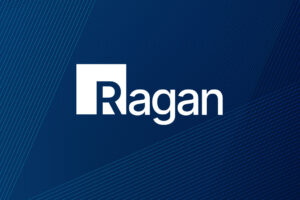Employee recognition ideas that go beyond the gesture
Gratitude is best communicated through recognition that’s personal, specific and actionable.

While the holiday season is a time for coming together, counting our blessings and giving thanks, it’s also an inflection point for rethinking what true gratitude really looks like.
Gratitude surfaces at work in the form of employee recognition, and you already know how crucial this recognition is to foster a culture where teams feel seen, heard and valued.
But there’s a difference between congratulating someone on an all-hands for a job well done and showing the impact that their job made. There’s a difference between thanking someone for taking a lead on getting a project to the finish line and empowering them to lead more in the future.
Recognition becomes a deeper expression of gratitude when it goes beyond general platitudes. We spoke to a few friends about the efforts and behaviors that demonstrate this true recognition in action.
Making it personal
Many moons ago during my time at Apple, a cartoonist colleague named Kim was creating short comics for her first graphic novel.
One day Kim gifted me a copy of her finished work. It included a one-page, four-panel comic about me — a sweet, unsolicited tribute titled, “Justin, Master of the Very Specific Compliment.”
This comic taught me that positive, specific feedback becomes a form of recognition. Pointing out how her approach to problem-solving with customers was an extension of her personality identified a behavior she’d never heard described before.
“Being specific with recognition is important, whether it’s peer or leader-led, said Cat Colella-Graham, internal comms lead and coach at Coaching for Communicators. “When people feel recognized, they operate quicker and more effectively.”
This advice is a reminder that specificity makes recognition feel personal and impactful. It turns the shout-out from a checklist item into a moment of genuine appreciation.
Making it meaningful
Colella-Graham’s wisdom underscores the importance of understanding what individuals value and then getting on their level, a table-stakes soft skill for any effective manager.
“The smallest unit of culture is between manager and employee,” she said. “It’s foundational.”
“When managers say, ‘Tell me how you work best. Do you like to see feedback? How often do you like to meet?’ it makes employees think, ‘Wait a second, I’m being valued in terms of my work style,’” she explained. “Everyone is different.”
When a gift becomes more than a gesture
While specificity and context are essential for meaningful recognition, communications leader and Ragan Advisory Board member Amanda Ponzar doesn’t discount the value of trophies and other gifts so long as that specificity and meaning is attached to them.
One of her previous organizations gave gift certificate awards at an all-staff retreat for very specific accomplishments. “Mine was ‘Communications Miracle Worker,’” she recalled.
When managers pay close attention to hobbies and preferences, accolades and gifts alike can be tailored to employee preferences.
“Over the years, I’ve received and given very specific gifts based on what an employee values,” continued Ponzar. “I’ve also received Starbucks cards, Frappuccinos and cookies. You can tell what I like.”
In a past role, Colella-Graham similarly gave out “Cheerios” to recognize truly outstanding moments. While the $100 Amazon gift card was great, this prize also sent a signal that “you really saved the day, won the client or nailed an impossible task,” she said.
Paying it forward
There are few better ways to recognize a talented team member than trusting them to lead a big project. But recognition shouldn’t stop once the project is over—it’s also crucial to ensure that they benefit from any additional recognition across the organization.
Tommia Hayes, a digital communications specialist for the U.S. Federal Government and Ragan Advisory Board member, worked under Ponzar at a past role when Ponzar trusted her to lead the marketing and conference logistics for a large conference.
“She supported me and empowered me to make decisions that were crucial to the success of the event,” remembered Hayes.
That year, the conference had its highest attendance in history and earned near-perfect reviews from both speakers and attendees. Due to this success, Ponzar received a bonus and not Hayes.
“So Amanda took it upon herself to provide me with a portion of her bonus,” Hayes said. “That showed me she valued my hard work and recognized I also contributed to the success of this conference.”
The power of peer-to-peer recognition
While socializing employee wins during company meetings or on the intranet is powerful, peer-to-peer recognition also matters more than people realize.
“People want to know that their work squad values them,” said Colella-Graham. “They want to know if their manager values them, too, because it feeds a professional end goal like a title or raise. But the personal is what really needs to be fed at work, and we’re not feeding that enough.”
When you cultivate a culture of recognition between lateral colleagues across teams, you also strengthen partnership and teamwork. Colella-Grahm believes this helps answer several questions at once: “How are people feeling about how we’re partnering with people? Do they feel seen, heard, and valued? Are we feeling seen, heard, and valued?”
“Those qualities of feeling seen, heard, and valued are often strongest among peers as opposed to leaders,” Colella-Graham continued, stressing that this remains true whether the recognition is happening within a team or across functions.
Peer-to-peer recognition also addresses equity concerns in hybrid environments, ensuring parity between the employee experience of colleagues working fully remote and those who will occasionally work from an office.
Colella-Graham normalized hybrid recognition through a program dubbed “Teach Me, Teach You”. This evolution of the virtual coffee chat gave each employee 15 minutes to teach the other something that made their day better.
“It levels the playing field because no matter your role, you have something to teach and something to learn,” she said.
Making everyday recognition part of your culture
While these dedicated recognition efforts are all worth replicating, making culture the foundation of recognition also means showing your gratitude and validating hard work every day.
Making this a regular thing starts with normalizing recognition on the channels where employees are most active, like group chats.
“Even when people are just communicating on Slack, the little personal milestones we recognize — like, ‘Hey, it’s Kyla’s birthday today; everyone wish her a happy birthday’ — are really important in a group setting,” said Colella-Graham.
They’re also a reminder that none of us can work alone.
“Even though I’m an independent consultant, I can’t function without a team,” she said. “It’s really important to know that the team is connected in some way.”
Facilitating connection is the ultimate mark of success for any communicator. Harnessing your power as a convener will earn the trust of employees across the organization, and convening nurtures culure with meaningful recognition. That’s not just a best practice for short, cold winter days, but a positive win year-round.
Justin Joffe is the editorial director and editor-in-chief at Ragan Communications. Follow him on LinkedIn.







